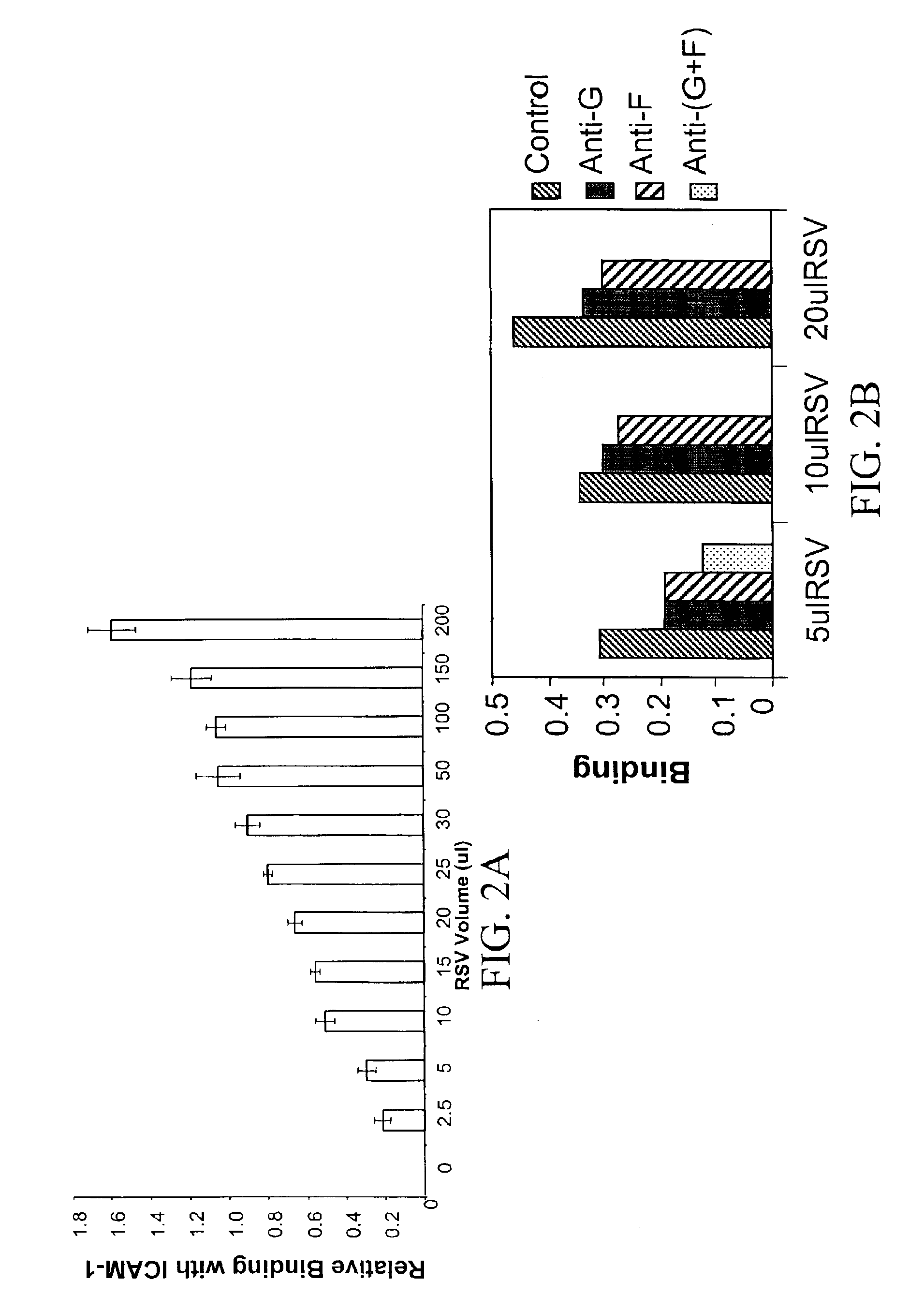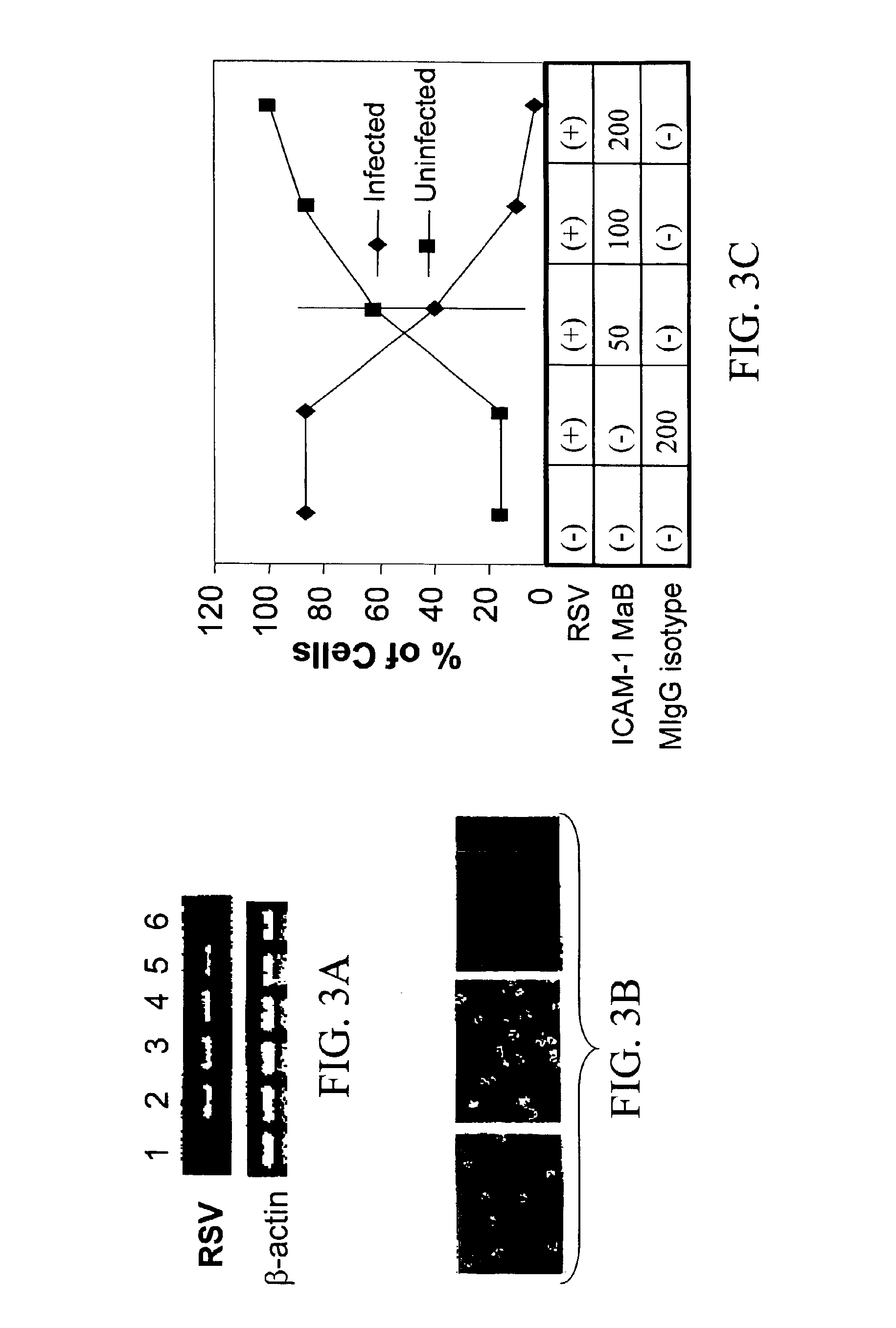Interrupting the interaction of intercellular adhesion molecule-1 and respiratory syncytial virus for prevention and treatment of infection
a technology of intercellular adhesion and respiratory syncytial virus, which is applied in the direction of respiratory disorders, peptides, drug compositions, etc., can solve the problems of no current fda approval, no immunosuppressed population approved, and significant excess morbidity and mortality in the elderly. , to achieve the effect of preventing respiratory infection, preventing rsv infection, and preventing rsv infection
- Summary
- Abstract
- Description
- Claims
- Application Information
AI Technical Summary
Benefits of technology
Problems solved by technology
Method used
Image
Examples
example 1
Materials and Methods
[0055]Cell culture, virus and infection. Bronchial epithelial cells, HEp-2 (ATCC CCL-23), and RSV A2 strain (VR-1302) were obtained from the ATCC, Rockville, Md. HEp-2 cells were grown at 37° C. with 5% CO2 in a minimum essential medium with Hank's salt, supplemented with 5% fetal bovine serum (FBS). HEp-2 cells were infected with RSV at 5×105 pfu / ml and left for absorbtion for 2 h at 37° C. with 5% CO2, after which the virus inoculum was replaced by complete medium. Cells were trypsinized and harvested at various hours post infection. RSV infection was detectable as early as 4 hours post infection by RT-PCR using primers for RSV-N gene (Hegele et al., 1994). Also, the RSV-infected cells could be enumerated by fluorescence microscopy using FITC-conjugated antibodies to RSV.
[0056]Confocal microscopy. RSV infected (5×105 pfu / ml) HEp-2 cells grown on coverslips for 24 hours were fixed in ethanol, blocked for 1 hour with 1% BSA in PBS, pH 7.4 and double stained with...
PUM
| Property | Measurement | Unit |
|---|---|---|
| pH | aaaaa | aaaaa |
| concentrations | aaaaa | aaaaa |
| concentration | aaaaa | aaaaa |
Abstract
Description
Claims
Application Information
 Login to View More
Login to View More - R&D
- Intellectual Property
- Life Sciences
- Materials
- Tech Scout
- Unparalleled Data Quality
- Higher Quality Content
- 60% Fewer Hallucinations
Browse by: Latest US Patents, China's latest patents, Technical Efficacy Thesaurus, Application Domain, Technology Topic, Popular Technical Reports.
© 2025 PatSnap. All rights reserved.Legal|Privacy policy|Modern Slavery Act Transparency Statement|Sitemap|About US| Contact US: help@patsnap.com



